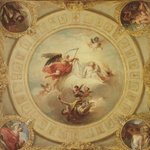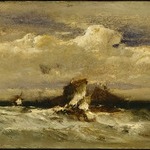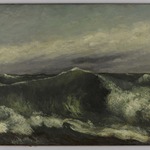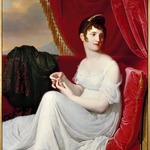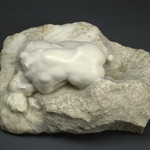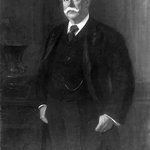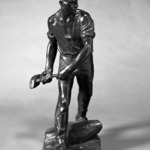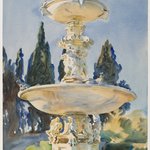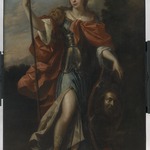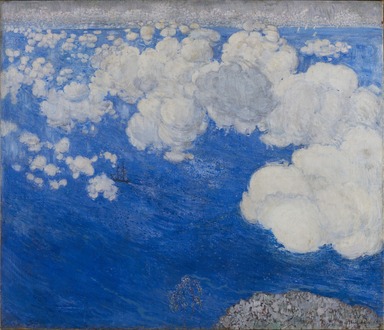
Clouds over the Black Sea--Crimea
Boris Anisfeld
European Art
On View:
Boris Anisfeld’s canvas presents a vertiginous view of the Black Sea from the top of the Ayu-Dag mountain in southern Ukraine. The viewer has the sensation of being placed in midair, looking down through billowing clouds at an expanse of blue water, in the midst of which is a small boat. Although the scene represents a vast space, the artist’s complex composition challenges the illusion of depth in traditional landscapes by flattening the elements—cloud, land, and horizon—onto a single plane.
This painting was included in the 1906 Salon d’Automne in Paris in the Russian galleries organized by the ballet impresario Sergei Diaghilev, for whom Anisfeld designed stage sets and costumes. After the 1917 Russian Revolution, the artist came to the United States, and within a year the Brooklyn Museum hosted his first American one-person exhibition.
This painting was included in the 1906 Salon d’Automne in Paris in the Russian galleries organized by the ballet impresario Sergei Diaghilev, for whom Anisfeld designed stage sets and costumes. After the 1917 Russian Revolution, the artist came to the United States, and within a year the Brooklyn Museum hosted his first American one-person exhibition.
MEDIUM
Oil on canvas
DATES
1906
DIMENSIONS
49 1/2 × 56 in. (125.7 × 142.2 cm)
frame: 56 1/2 × 63 1/2 × 3 1/2 in. (143.5 × 161.3 × 8.9 cm) (show scale)



SIGNATURE
Signed lower right: "Boris Anisfeld"
COLLECTIONS
European Art
ACCESSION NUMBER
33.416
CREDIT LINE
Gift of Boris Anisfeld in memory of his wife
MUSEUM LOCATION
This item is not on view
CAPTION
Boris Anisfeld (Bal?i, present–day Moldova (former Russian Empire), 1879–1973, Waterford, Connecticut). Clouds over the Black Sea--Crimea, 1906. Oil on canvas, 49 1/2 × 56 in. (125.7 × 142.2 cm). Brooklyn Museum, Gift of Boris Anisfeld in memory of his wife, 33.416 (Photo: Brooklyn Museum, 33.416_PS11.jpg)
IMAGE
overall, 33.416_PS11.jpg. Brooklyn Museum photograph, 2022
"CUR" at the beginning of an image file name means that the image was created by a curatorial staff member. These study images may be digital point-and-shoot photographs, when we don\'t yet have high-quality studio photography, or they may be scans of older negatives, slides, or photographic prints, providing historical documentation of the object.
RIGHTS STATEMENT
No known copyright restrictions
This work may be in the public domain in the United States. Works created by United States and non-United States nationals published prior to 1923 are in the public domain, subject to the terms of any applicable treaty or agreement.
You may download and use Brooklyn Museum images of this work. Please include caption information from this page and credit the Brooklyn Museum. If you need a high resolution file, please fill out our online application form (charges apply).
The Museum does not warrant that the use of this work will not infringe on the rights of third parties, such as artists or artists' heirs holding the rights to the work. It is your responsibility to determine and satisfy copyright or other use restrictions before copying, transmitting, or making other use of protected items beyond that allowed by "fair use," as such term is understood under the United States Copyright Act.
The Brooklyn Museum makes no representations or warranties with respect to the application or terms of any international agreement governing copyright protection in the United States for works created by foreign nationals.
For further information about copyright, we recommend resources at the United States Library of Congress, Cornell University, Copyright and Cultural Institutions: Guidelines for U.S. Libraries, Archives, and Museums, and Copyright Watch.
For more information about the Museum's rights project, including how rights types are assigned, please see our blog posts on copyright.
If you have any information regarding this work and rights to it, please contact copyright@brooklynmuseum.org.
RECORD COMPLETENESS
Not every record you will find here is complete. More information is available for some works than for others, and some entries have been updated more recently. Records are frequently reviewed and revised, and we welcome any additional information you might have.


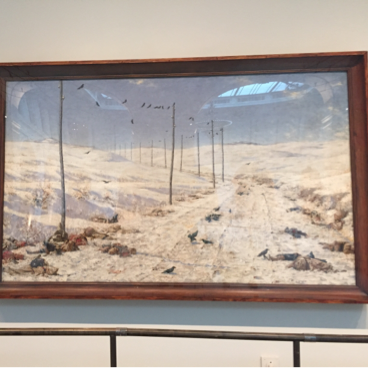
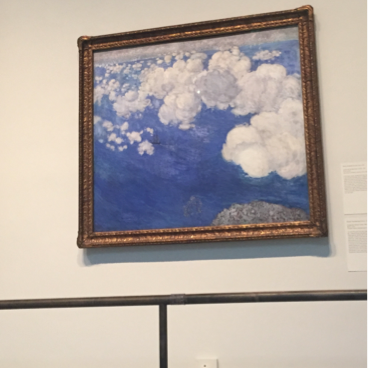
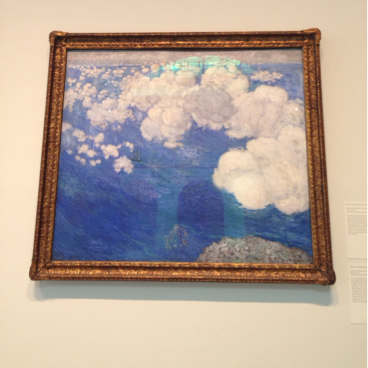
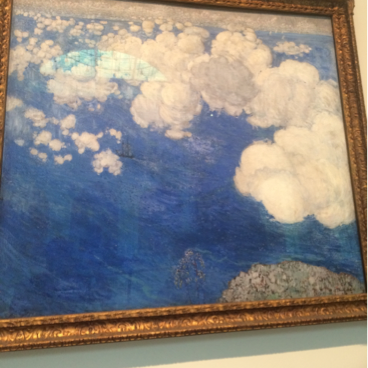

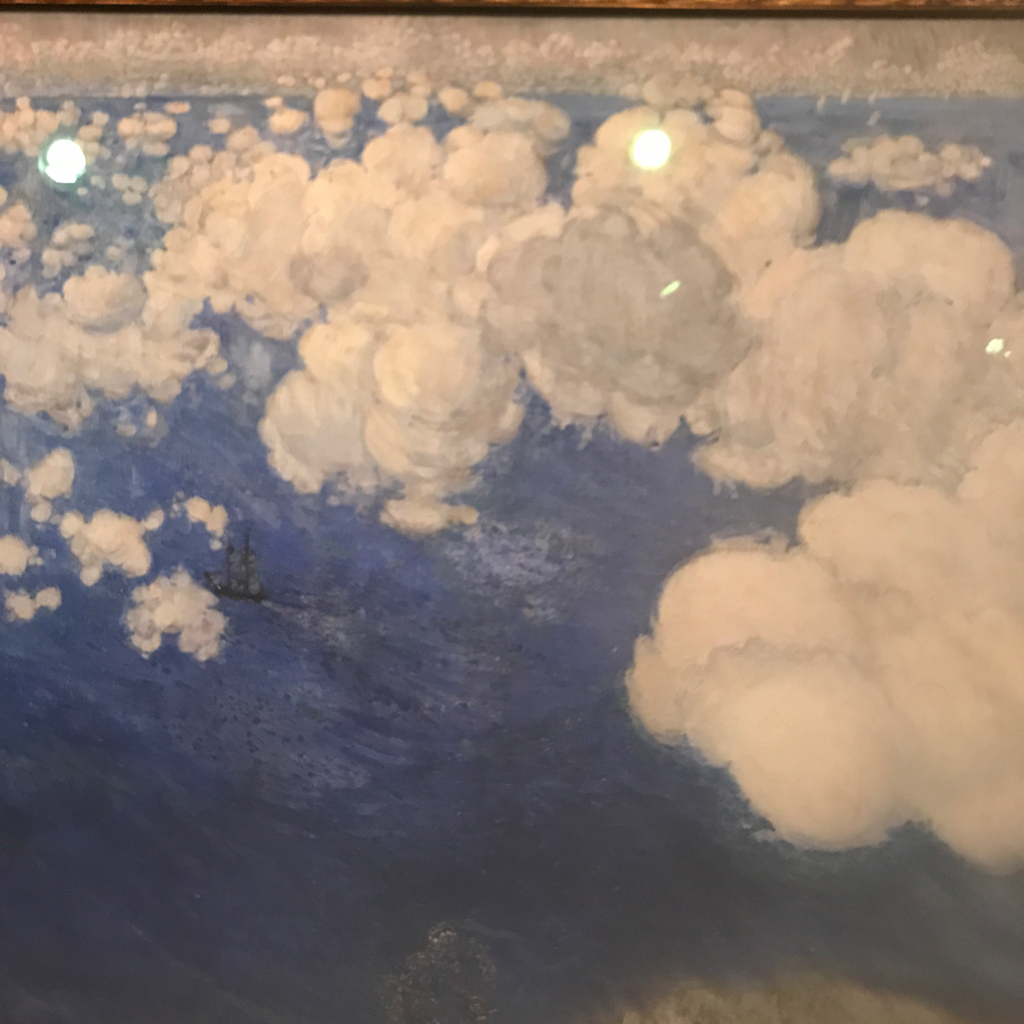
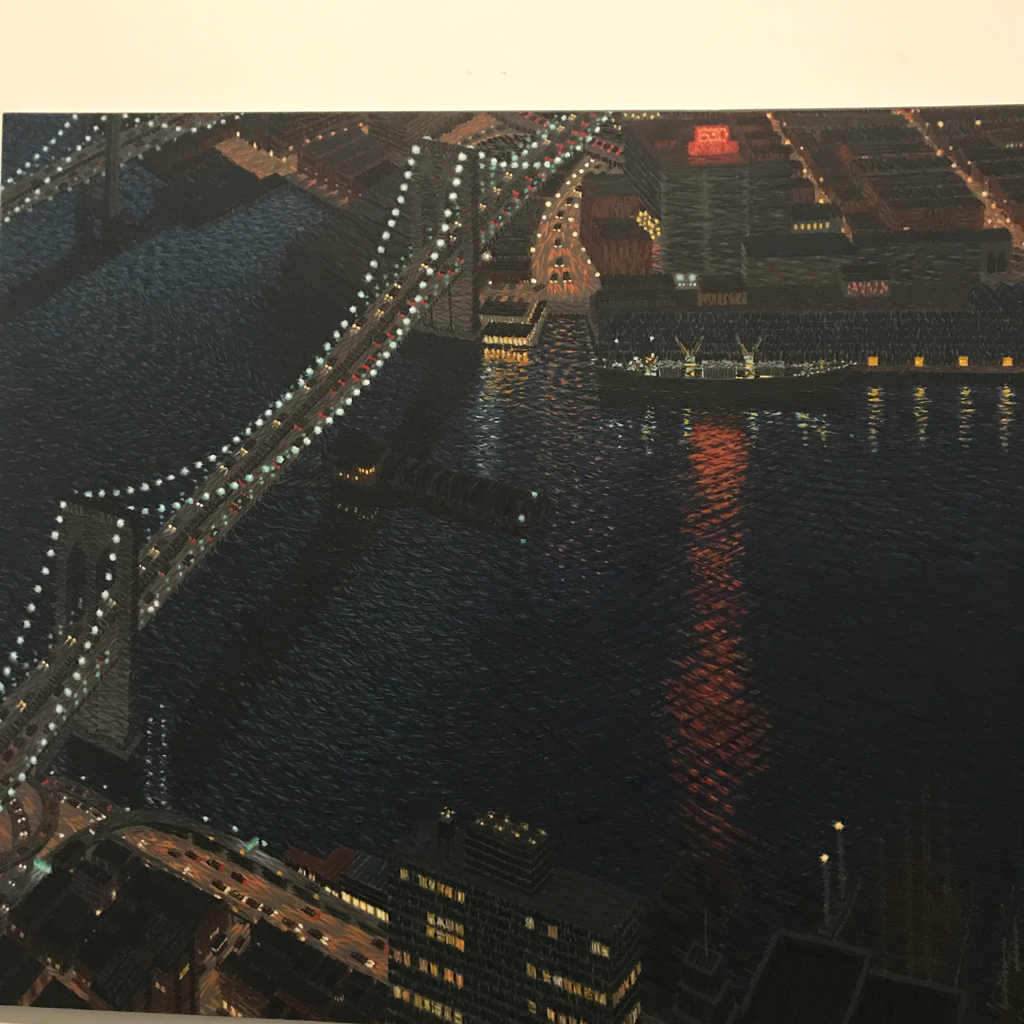
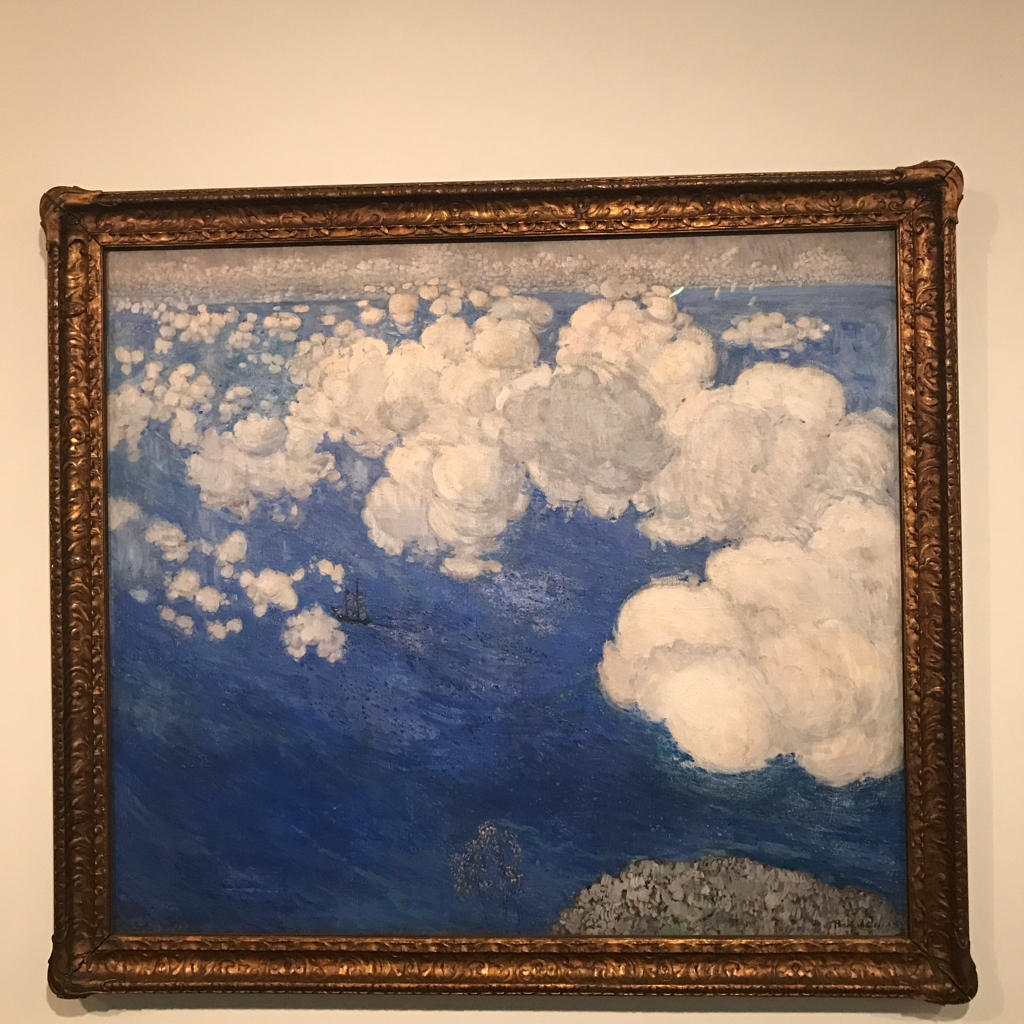


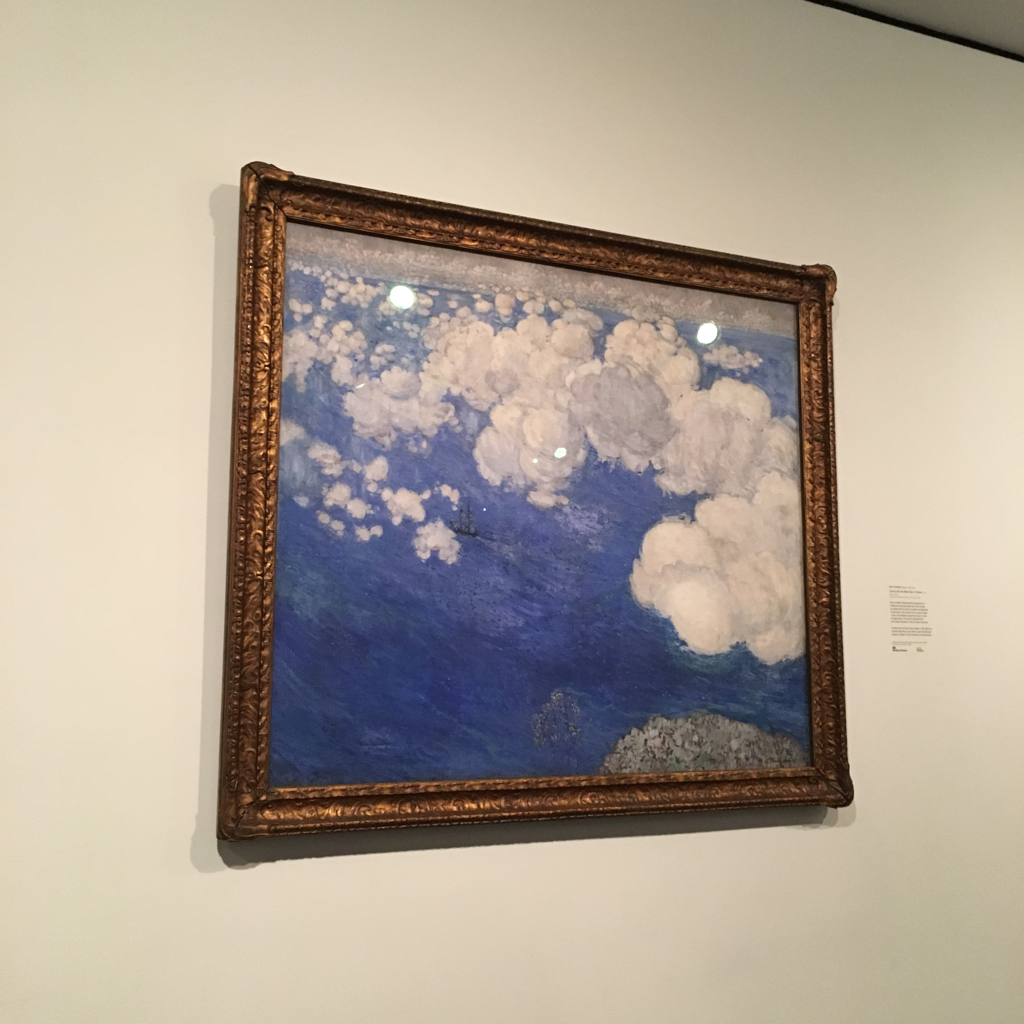
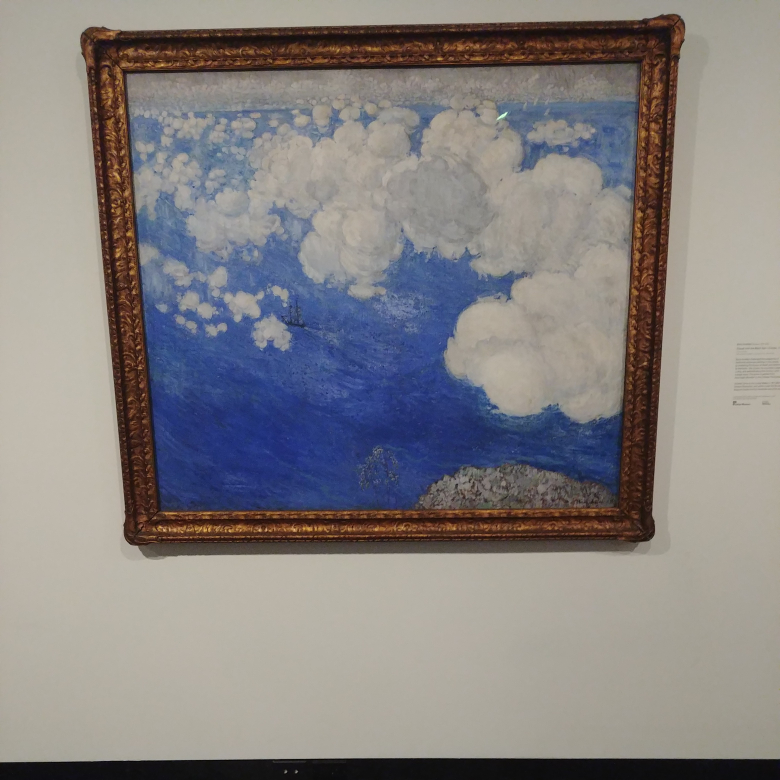
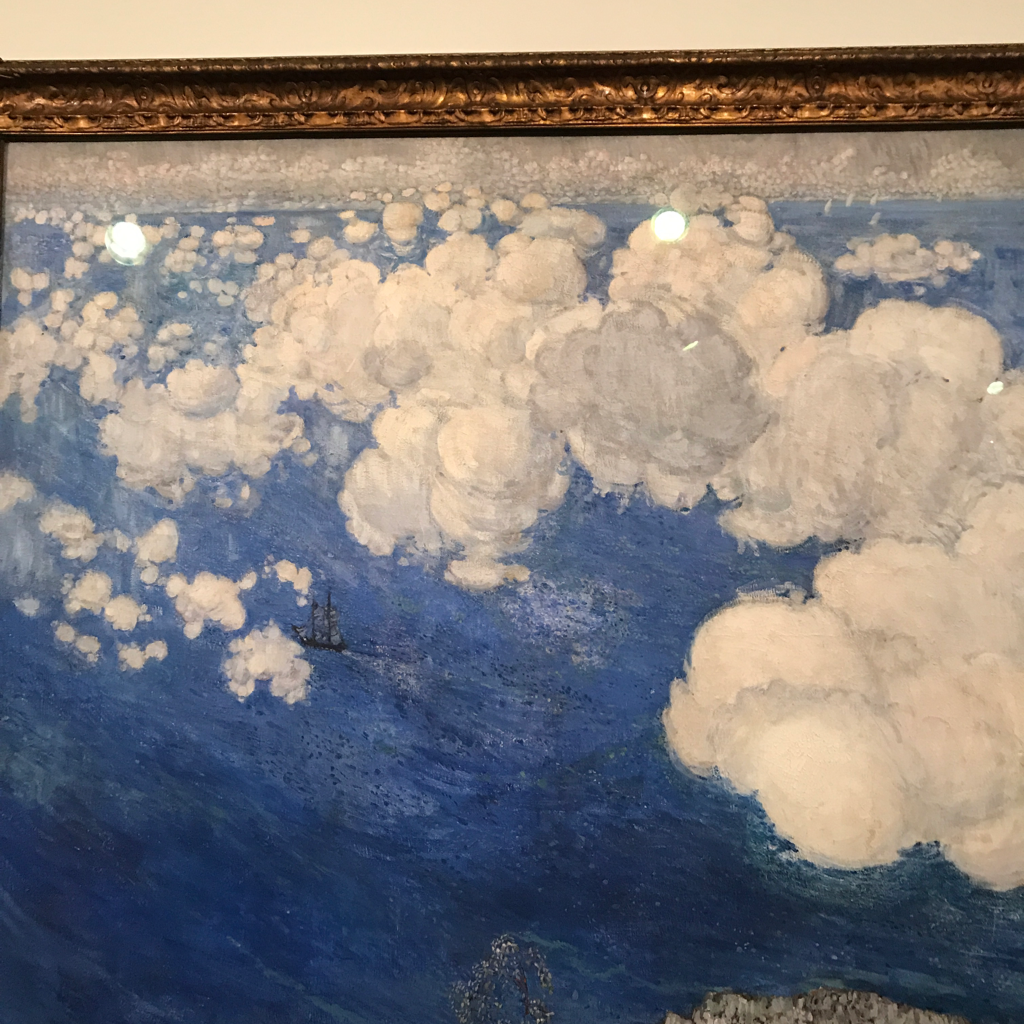


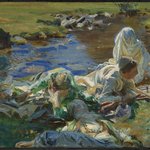



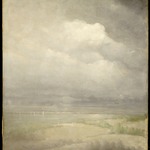
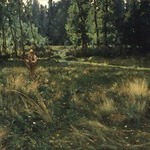
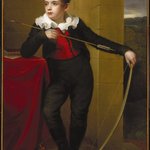
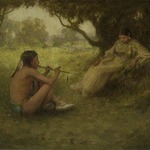
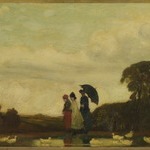
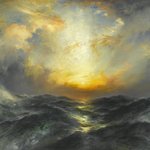


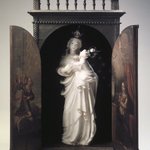

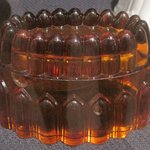
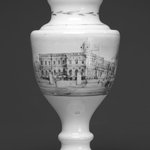

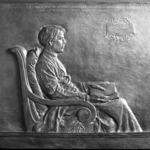

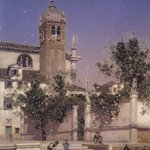
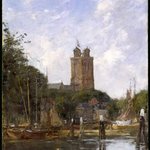

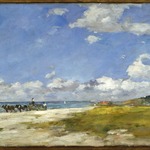
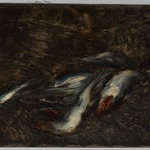
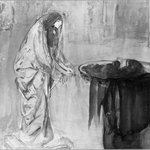
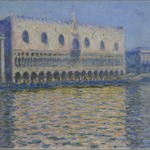
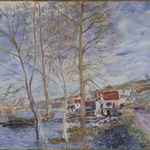
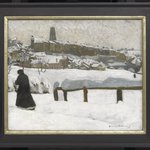


![Portrait of Mlle Fiocre in the Ballet "La Source" (Portrait de Mlle...E[ugénie] F[iocre]: à propos du ballet "La Source")](https://d1lfxha3ugu3d4.cloudfront.net/images/opencollection/objects/size2_sq/21.111_PS11.jpg)

